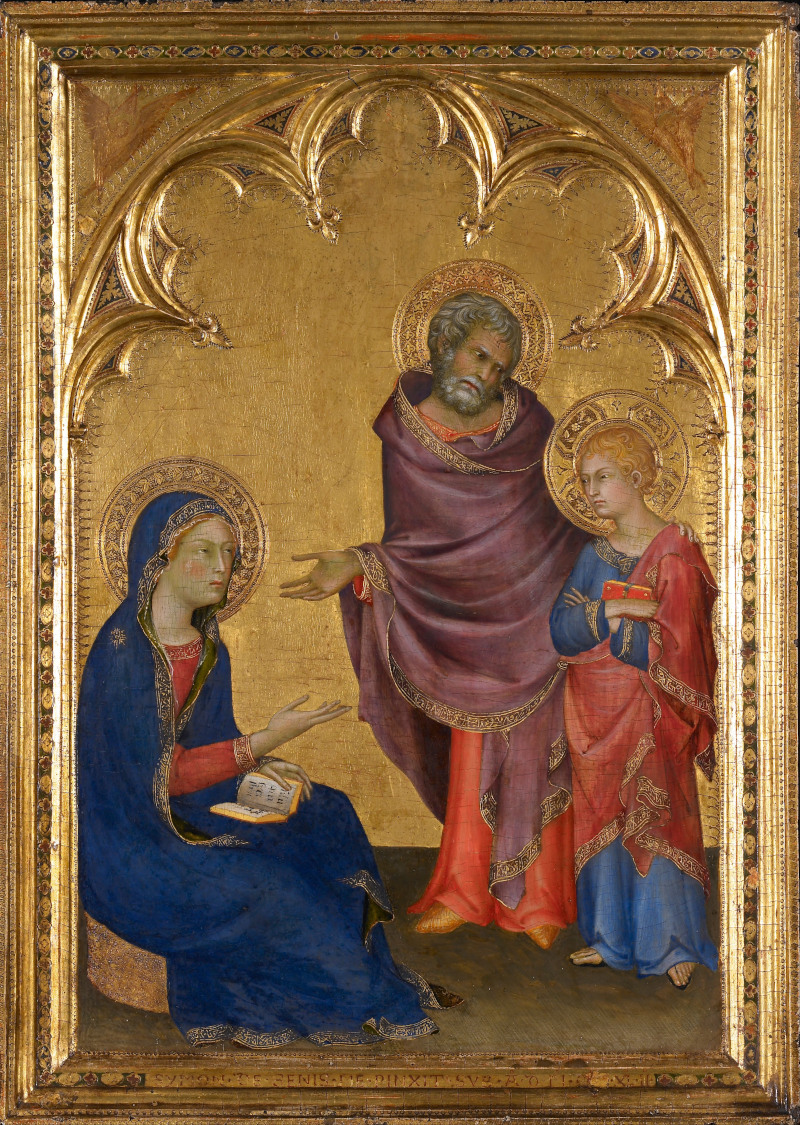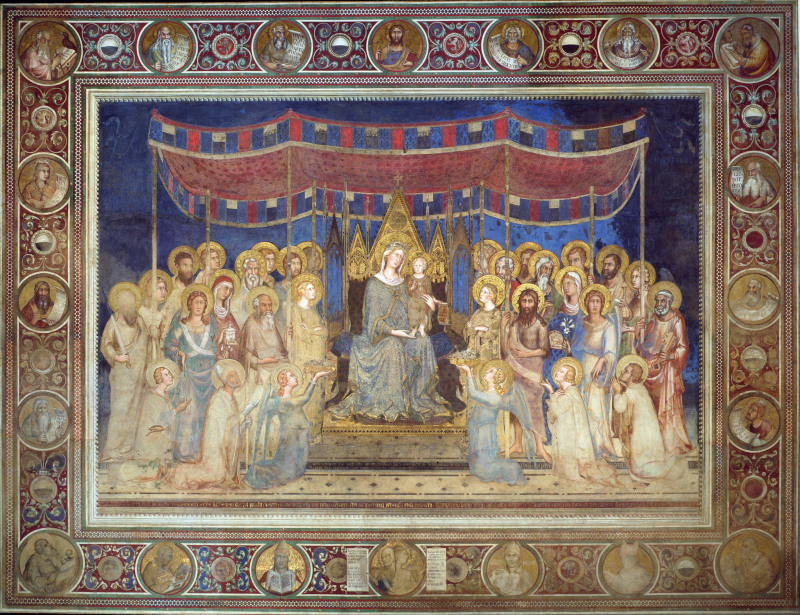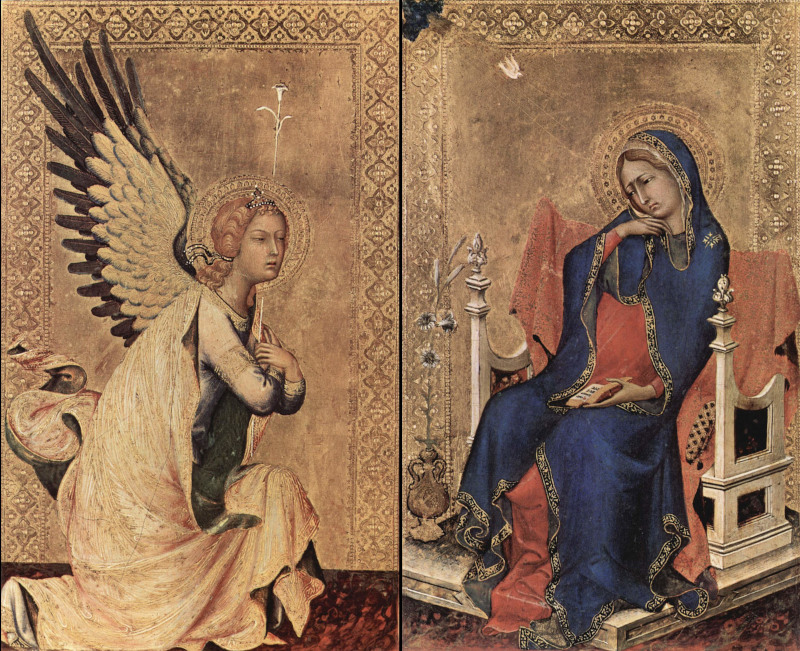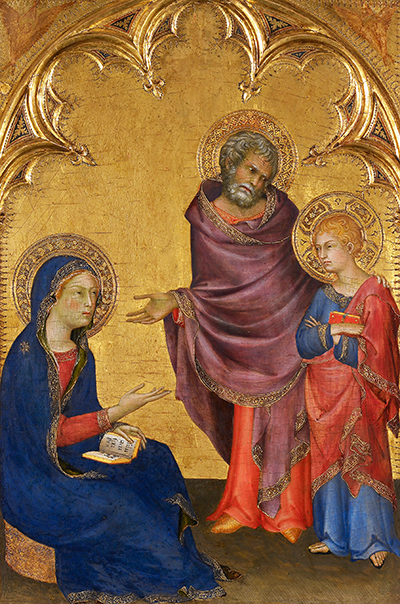Simone Martini was a leading light in the Sienese School and helped to shape the evolution of Italian art.
Martini is widely believed to have trained under either Duccio or Giotto and is classified as part of the International Gothic movement. Whilst delivering a number of highly regarded frescos and even re-locating to France in later life, the artist was also notable for his contribution to tutoring the next generation of painters in Siena.
Introduction
The Sienese School was highly influential within Italy for a number of centuries, and particularly so in the years leading into the early Renaissance. The artists within this collective were famed for bright tones of color, slim figurative art and a strong focus on religious themes. Simone Martini fitted into that style perfectly and also helped to draw in ideas from elsewhere in Italy from his own experiences.
Training as an Apprentice
The artist initially received training as an apprentice to Giotto or Duccio, with no clear concensus ever having been reached. He was no mere imitator, though, and was able to infuse his learnings with some ideas of his own, helping to produce an output that was entirely unique.
From as early as his early thirties, the artist was already influencing others. He had learnt from manuscript illustration and other art forms which influenced his work and provided something slightly different to Sienese art, even though the main fundamentals were very much in line with this region's trademark approach.
Role in the Sienese School
Whilst imparting his own ideas and artistic flourishes, Simone Martini was entirely in line with the traditions of Sienese art. He remained faithful to the tried and tested focus on religious content, perhaps under guidance from his donors who required frescoes to fill and decorate large buildings around Siena. With few private commissions, there was little need for portraiture within the Siena School, and this is seen in the ouevres of other artists within this group too.
One of his closest allies was Lippo Memmi, also his brother-in-law. They worked together successfully on a number of projects and clearly managed to develop and strong working relationship. Martini's success in France also helped to spread the reputation of the wider school across Europe, later bringing opportunities to other members.
Ambrogio Lorenzetti Artwork Gallery

Christ Discovered in the Temple

Maesta

Annunciation Diptych
Major Projects
Maestà
Simone Martini completed his own version of Maestà in 1315 and it was installed at the Palazzo Pubblico, Siena. This impressive piece features the patterned detail that is typical of art from this city, along with human-like qualities to the Madonna, which allows a greater connection between the painting and the viewer. The facial features are relatively emotionless, but the qualities of this piece were enough to inspire other versions of Maestà within Siena in the years that followed.
 Maestà
Maestà
Frescoes in the Lower Church of San Francesco, Assisi
The Upper and Lower Churches of the Basilica of Saint Francis of Assisi feature stunning works by a number of 13th and 14th century masters including Simone Martini, Cimabue and Giotto. The San Martino Chapel features ten artworks by Martini, which provide stories from the saint's life. Further works by the artist can be found elsewhere in the church.
The Annunciation
Simone Martini completed a number of different interpretations of Annunciation, including two in 1333 alone. His Annunciation with St. Margaret and St. Ansanus is particularly impressive and can be found today at the Uffizi Gallery in Florence, though it was a collaborative piece working alongside Lippo Memmi and potentially a number of assistants. Much expense was allowed for this piece, such was the prestige behind the commission, which was originally intended for the altar of St. Ansanus in the Cathedral of Siena.
Time in France at the Avignon Papacy
Simone Martini found commissions in Avignon during a period known as the Avignon Papacy. Pope Clement VI was based in Avignon and provided the artist with a number of commissioned pieces. Not only were these well paying projects, but the opportunity to work for such prestigious figures also helped to build his own reputation and find additional work elsewhere in Avignon.
Artists influenced by Simone Martini
The Siena School would continue to flourish deep into the 16th century and a number of notable names would learn from Martini and incorporate elements of his work into theirs. Lippo Memmi, his brother-in-law, is the most obvious example because of their family connection and also because of the commissions that they completed together. The likes of Taddeo di Bartolo, Gentile da Fabriano and Andrea di Bartolo would all display an influence in their own work, and for many Martini was seen as the leading Sienese artist since Duccio.
Conclusion
Martini's altarpieces, frescoes, and religious themes with intricate details and bright colors helped to continue the success of the Siena School, with his work in France helping to broaden its international reputation. He was able to work within the changing times, with Gothic and early Renaissance art taking shape. Whilst this artist is not one of the biggest names of the 14th century, his role was still highly significant and he was also very highly regarded within his own lifetime, as underlined by the number of fellow painters who displayed influence from him in their own work.




